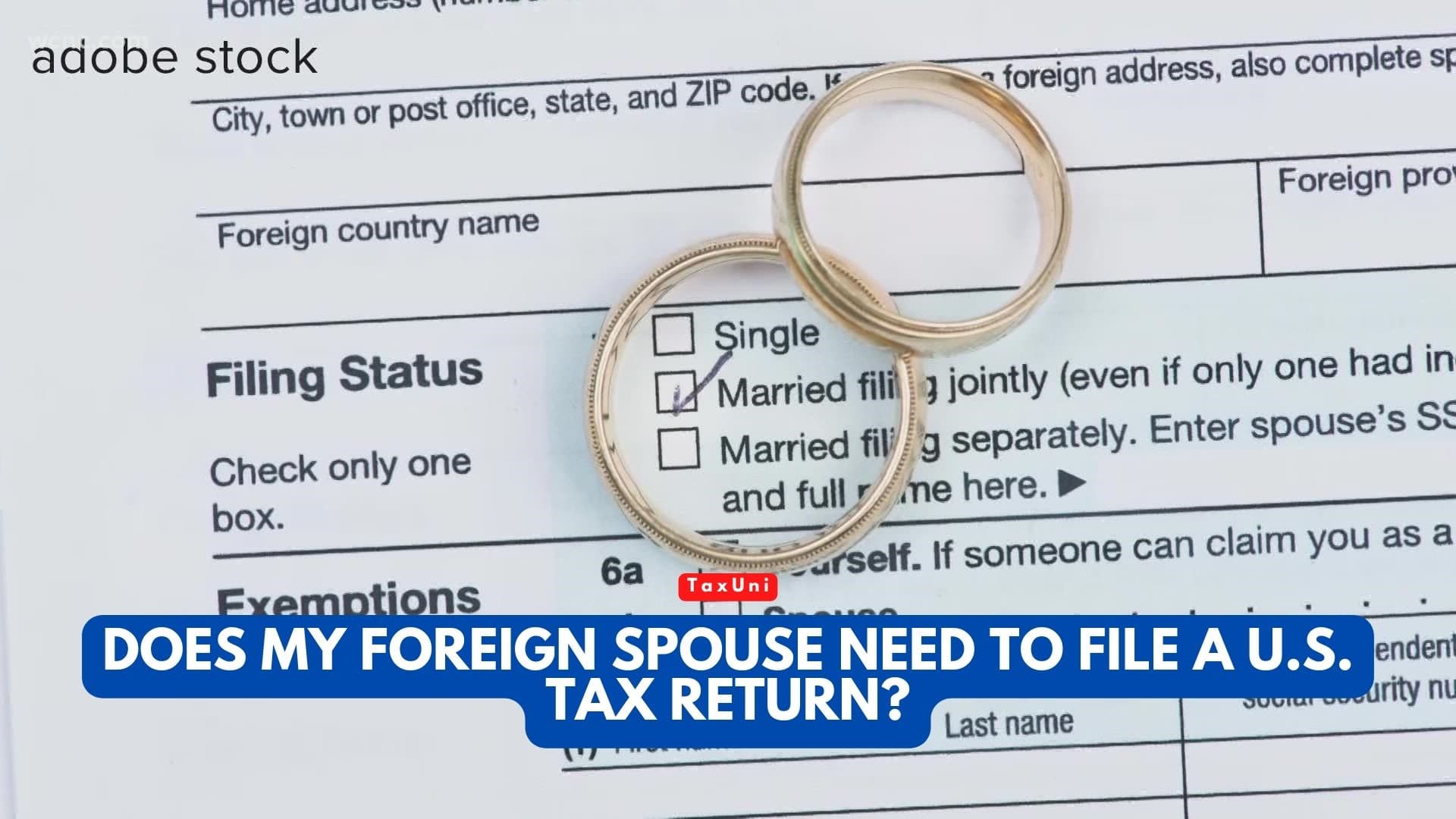Does My Foreign Spouse Need to File a U.S. Tax Return?
If you are a U.S. citizen's spouse and live in a country other than your home country, you may wonder how the IRS views your relationship. This article will explain how the IRS regards your foreign spouse, what constitutes a nonresident, and the tax implications of this relationship.

A Foreign spouse is a spouse who is not a citizen of the United States. This means that the nonresident spouse will have to pay taxes on any income earned in the U.S., even if the other spouse is a U.S. citizen. If you have a foreign spouse, you will want to know how to claim your spouse’s income on your tax return. Here is everything.
The tax implications of a foreign spouse of a U.S. citizen can vary. If you are wondering how to claim your spouse on your U.S. tax return, you should learn more about the laws surrounding this topic. You may also qualify for special tax benefits and relief programs the IRS offers.
When you file a joint return, you and your foreign spouse will be treated as U.S. residents for the tax year. This means that your total worldwide income will be taxable. This includes dividends, interest, capital gains, and wages. You can take advantage of tax breaks and deductions, like the Foreign Earned Income Exclusion and the Foreign Tax Credit.
If you are a resident alien, you can use the same filing forms and deadlines as American citizens. However, you may have to submit an FBAR (Financial Accounts and Reports) form. You should also check with the U.S. to see if your country has a tax treaty with the U.S.
Ways to Treat a Nonresident Alien Spouse As A Resident For Tax Purposes
There are three ways that you can treat your nonresident spouse as a resident for tax purposes:
- The first way is by filing a joint tax return. This is the easiest way to do it. To file a joint tax return, you and your nonresident spouse must meet certain conditions. You must provide your social security numbers, employer identification numbers, and full addresses. The nonresident spouse must also provide an ITIN. You can find information on obtaining these numbers from the IRS website. You will need to submit this documentation to the IRS to ensure that your spouse is treated as a resident for tax purposes.
- A second option is to file a separate return. This option is not available if your foreign spouse does not have dependents. You can also choose to have the nonresident spouse treated as a resident for other tax purposes, but the tax rate will be higher. You can only do this if you are a married couple. This type of filling is also known as the Head of Household. The spouses must live together, and you must spend at least half of your expenses with your spouse. If your nonresident spouse has dependents, they must be included in your household. If you choose this option, you must ensure that your dependents have a valid social security number.
- A third option is to treat your foreign spouse as a resident retroactively. You can do this by filing an amended return. The amendment must be filed within three years of the original return date. If you file a return after the year you decided to treat your nonresident spouse as if they were a resident, you will need to provide a new joint return.





